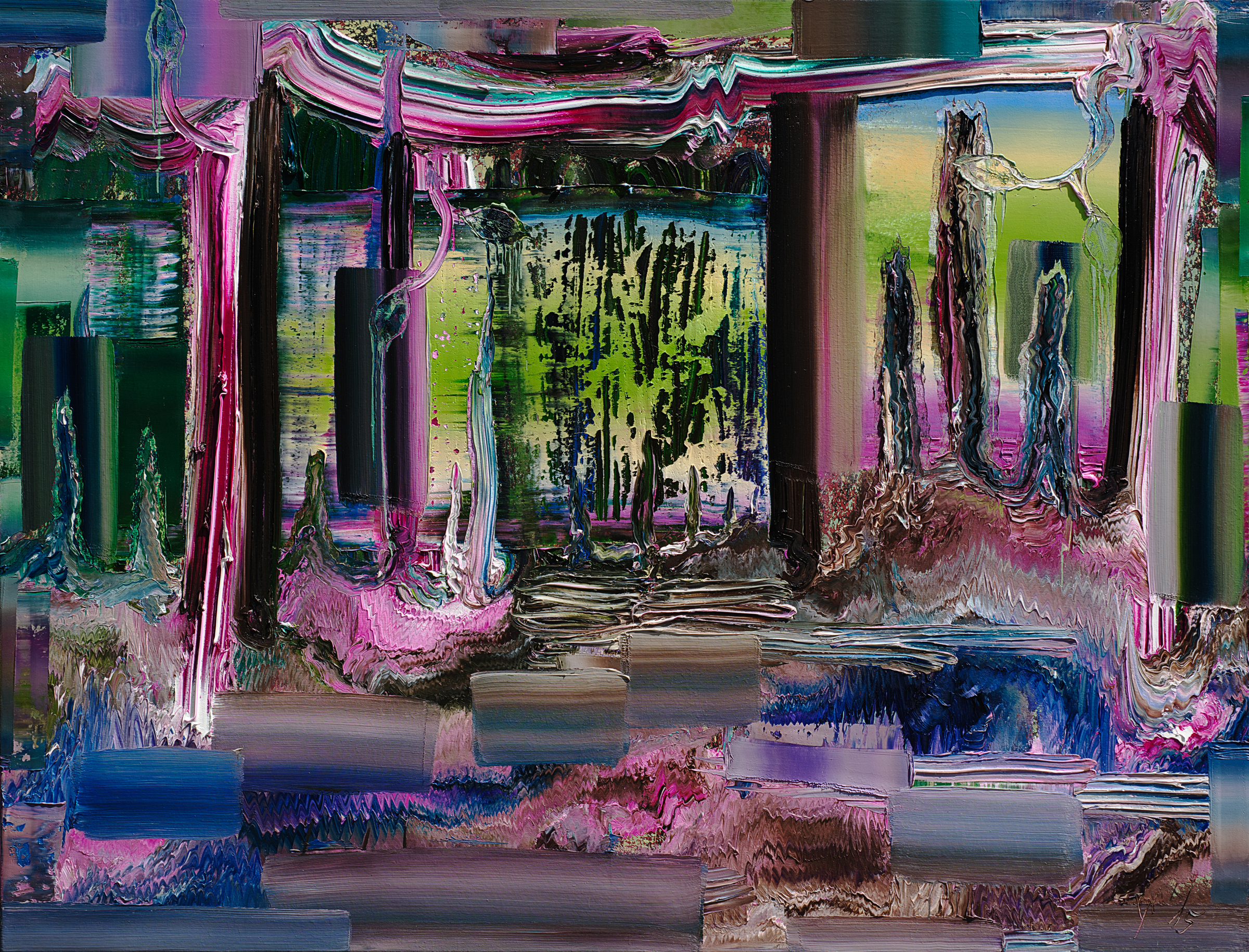(...) But “Surprise” also holds surprises for the spectator, who is here immersed in stormy seas of paint, in landscapes of caves, in fantasy worlds full of magical, primal forces. In ancient mythological scenarios. All is suffused with shimmering zones, separated by moments of perished nature, scattered through with awakening drives. We are stranded, as once Odysseus was, near the Sirens’ fatal shore. We are tempted, befogged, misled. We track through a haunted world of ballads. All somehow seems to pulse. As Goethe urged, this is an art moved by the systole and diastole of the heartbeat. The images seem almost to erupt, the paint itself to inhale and exhale. And so waves well up within it. We plunge into a cosmos of colour modulations, from dark to dazzling bright. We gaze over the dangerous waters of a stalactite cave, through to weathered columns and petrified life, as Brixy boldly brings us through a wholly unexpected spectrum of colours and combinations.
On our way to “Tomorrow”, in “Surprise”, we move through dense spaces, teeming with concepts. Again and again, the archaic “primal force of painting” thunders around us. In the storm of life. Did all this emerge from Brixy’s “Discover” paintings, with their diffuse Edenic landscapes? Is there a hint of the “Big Bang” here? And hence the connection of content and form? Yes, unquestionably.
Astonishingly, in these latest works, Brixy’s powerful swirls give way to something else: a furious battle of the elements, and then, in turn, a new becoming of light and colour. We stand, fascinated and puzzled, before these breath-taking scenarios of world-destruction and world-creation. (...)




